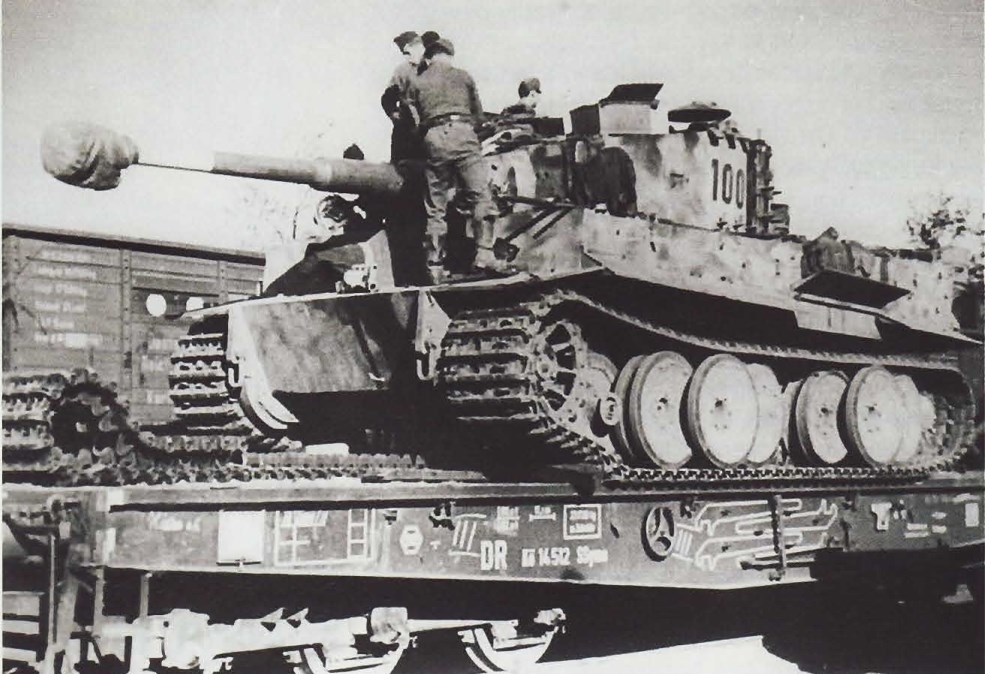
The withdrawal of 4th Panzer Division from Courland
substantially reduced the armoured assets of the army group. In an attempt to
improve the flexibility of the remaining forces, a new formation, named Panzer
Brigade Kurland, was created. Commanded first by Oberst von Usedom, then Major
Graf von Rittberg, the brigade was initially termed Panzer Aufklärungs-Gruppe
Kurland (`Armoured Reconnaissance Group Courland’) and consisted of the
reconnaissance battalions of 12th and 14th Panzer Divisions. The group then
received the personnel of Grenadier Sturmbataillon Kurland (`Grenadier Assault
Battalion Courland’), another improvised formation, and a battalion of combat
engineers. Two battalions of tank destroyers provided additional firepower.
These were predominantly equipped with the excellent Jagdpanzer Pz. 38(t) or
Hetzer, a low-slung assault gun armed with a powerful 75mm gun mounted on the
chassis of the Pz. 38. This chassis had started life as the Czech Pz. 38 tank,
and was used by the Wehrmacht in the early years of the war. Although it had an
excellent reputation for reliability, its relatively thin armour and small
turret – which prevented the fitting of a gun powerful enough to deal with
modern enemy tanks – rendered it obsolete. In its new role as a tank destroyer,
equipped with a similar gun to the Pz. IV and Sturmgeschütz III, it was a
capable vehicle. In addition to several Hetzer tank destroyers, Panzer Brigade
Kurland also had a company of ten captured T-34s. The creation of the brigade
weakened 12th and 14th Panzer Divisions; their reconnaissance battalions had a
powerful mixture of half-tracks and armoured cars, and were often used as
independent battlegroups. However, the new brigade, effectively functioning as
another battlegroup, was able to remedy some of the problems caused by the
withdrawal of 4th Panzer Division.
Brigadekommandeure:
Oberst von Usedom
Major Graf von Rittberg
Panzer Aufklärung Abteilung 12
Panzer Aufklärung Abteilung 14
Elements of schwere Panzer Abteilung 510
Grenadier Sturmbataillon Kurland (organized from infantry
odds and ends)
A Panzerjäger Abteilung with Hetzer (specific unit
designation not given)
Another unspecified company with 10 captured T-34
A “reinforced combat engineer battalion”
A Flak Abteilung
An artillery Battery with 4 light and 3 heavy howitzers
From NARA Microfilm T78, roll 624. The Panzer/Stug/Arty
& Pak(Sfl) lage dated 14th April 1945 has Pz.Brig Kurland (actual date of
report 15th March 1945) with 1x Pz III Lg, 1x Pz IV L/48, 1x Pz IV Beob wg, 2x Marder
II (7,5 cm) (& 2 in repair?), 2x Pak40 75cm 38t (& 7 in repair?). Have
not located a column for captured Panzers on hand. This particular roll only
has army group level stats for dates earlier then 15th March 1945.
Schwere
Panzer-Abteilung 510
15 January 1945: All 22 Tigers are operational. The
battalion reports directly to Heeresgruppe Kurland (Army Group
“Courland”).
22 January 1945: Rail movement in two transports to
Frauenburg.
23 January 1945: Third transport to Ilmaja. The remaining
tanks are assigned to Panzer-Brigade “Kurland” and then employed as a
blocking force for the field-army group.
19 March 1945: The remaining tanks are handed over to
Leutnant Wine, who remains in Kurland. The rest of the battalion receives a
warning order that it is to be reconstituted in the Berlin area and equipped
with Tiger II tanks.
The Panzerjäger unit may have been the 3./Armee-Pz.Jg.Abt. 753. In its status reports dated 1.3.1945 and 1.4.1945 the Armee-Pz.Jg.Abt. 753 reported “ohne 3. Kp.” which was detached to an unnamed unit. The 3. Kp. was equipped with ‘Marder’ type self-propelled guns while the 1. and 2. Kp. had towed anti-tank guns.